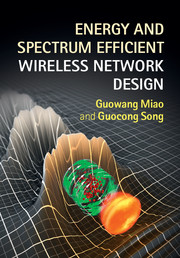Book contents
- Frontmatter
- Dedication
- Contents
- Preface
- Acronyms
- 1 Introduction
- Part I Basic concepts
- Part II Centralized cross-layer optimization
- Part III Distributed cross-layer optimization
- 12 Overview
- 13 Opportunistic random access: single-cell cellular networks
- 14 Opportunistic random access: any network topology
- 15 Optimal channel-aware distributed MAC
- 16 Opportunistic random access with intelligent interference avoidance
- 17 Distributed power control
- Part IV Cross-layer optimization for energy-efficient networks
- Appendix A Proofs of Theorems and Lemmas
- References
- Index
16 - Opportunistic random access with intelligent interference avoidance
from Part III - Distributed cross-layer optimization
Published online by Cambridge University Press: 05 December 2014
- Frontmatter
- Dedication
- Contents
- Preface
- Acronyms
- 1 Introduction
- Part I Basic concepts
- Part II Centralized cross-layer optimization
- Part III Distributed cross-layer optimization
- 12 Overview
- 13 Opportunistic random access: single-cell cellular networks
- 14 Opportunistic random access: any network topology
- 15 Optimal channel-aware distributed MAC
- 16 Opportunistic random access with intelligent interference avoidance
- 17 Distributed power control
- Part IV Cross-layer optimization for energy-efficient networks
- Appendix A Proofs of Theorems and Lemmas
- References
- Index
Summary
In the previous two chapters, we have introduced how to design optimal channel-aware medium access strategies that perform close to that of centralized schedulers. We have considered a very generic network model, where the network can be of an arbitrary topology. The solution designed can be applied in many types of wireless networks, e.g. cellular networks, ad hoc networks, sensor networks, and so on. To simplify the design, we have assumed a collision model, i.e., the transmission and interference ranges are fixed and a packet will be received correctly only if the receiver is within the transmission range and there are no other simultaneous transmissions within the interference range. In practice, there are no fixed transmission or interference ranges and the packet reception depends on the signal to interference plus noise ratio (SINR) of received signals. Therefore, some improvements are necessary to apply the channel-aware medium access control (MAC) schemes. As we can see from the designs, to run the protocols only the optimal thresholds in (14.16) for decentralized optimization for multi-channel random access (DOMRA) and (15.10) for channel-aware distributed medium access control (CAD-MAC) are related to the transmission and interference ranges. So the question would be how to determine the thresholds in practice, or, in other words, how to determine the severe interference relationship of all users in the network, as the thresholds are determined by the severe interferers. After determining the threshold, the data transmission and reception can follow normal communication procedures.
- Type
- Chapter
- Information
- Energy and Spectrum Efficient Wireless Network Design , pp. 203 - 216Publisher: Cambridge University PressPrint publication year: 2014

